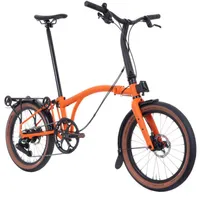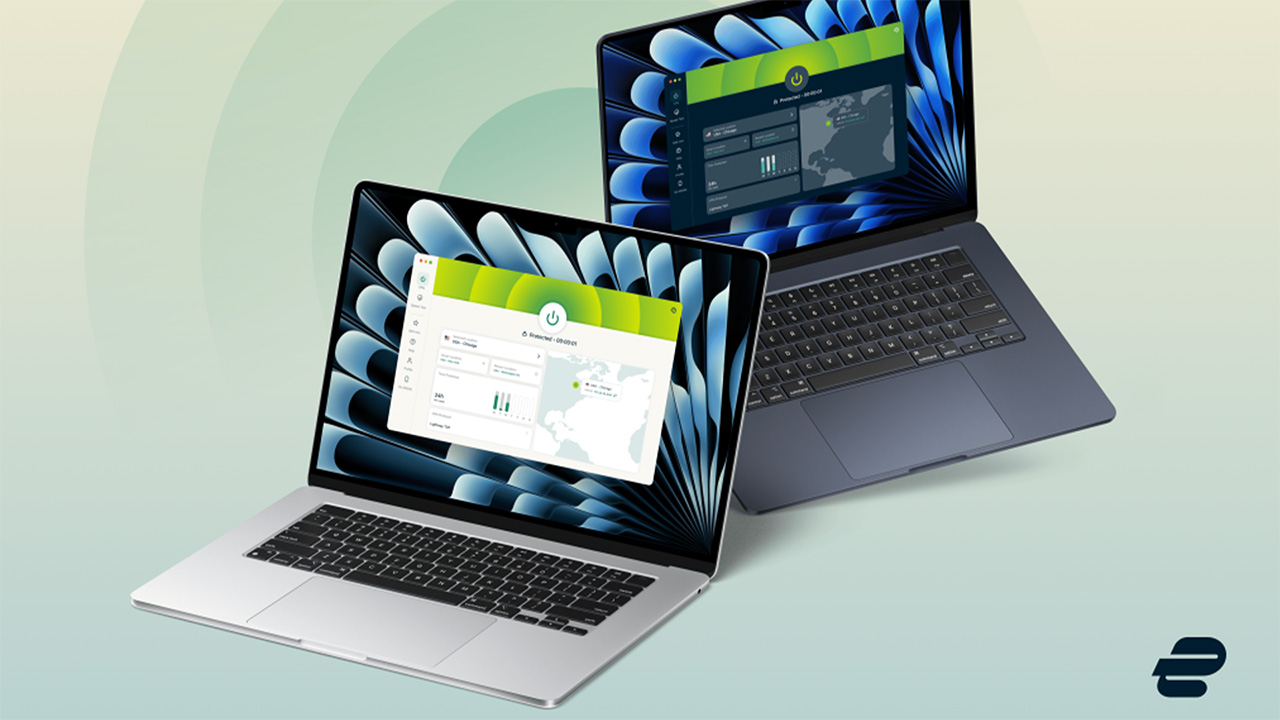I just spent a week with Brompton's latest folding bike — here's what I like and what I don’t
Identity crisis
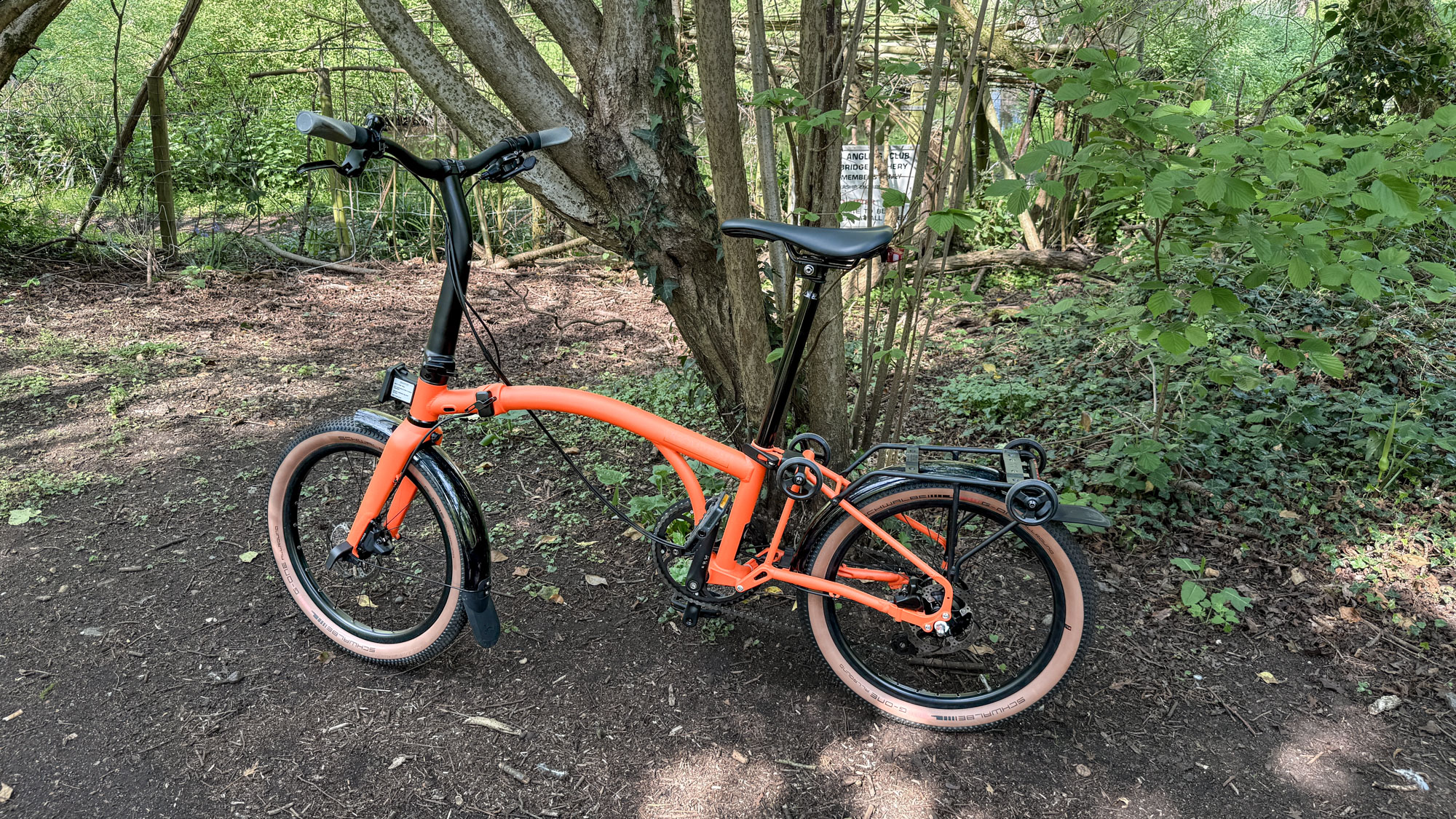
Brompton bikes are a common sight on the streets of London. If anything, they're a source of national pride. I've been cycling around the U.K. capital for well over a decade and these distinctive folding bicycles are everywhere.
The bikes are manufactured in west London and ridden here because space is at a premium. Anyone who's had a chance to ride the London Underground will know what I'm talking about. Bromptons offer a patented folding mechanism whereby the back wheel swings down and underneath the frame as opposed to alongside like conventional bikes.
It turns the entire thing into a package about the size of a suitcase, letting you stow it on a train, in the trunk/boot of your car or even under your desk once you get to the office.
This design has remained largely unchanged since the 1970s, relying on tweaks and refinements to the formula over time. For example, the brand has leaned into the electric bike age with an electric P Line model my colleague Jane McGuire used a couple of years ago as well as the Brompton Electric C Line Explore.
Despite never having owned a Brompton before, I was lucky enough to secure a loan sample of the company's latest creation: the Brompton G Line. It makes some pretty sweeping changes to the established design as the company's first attempt at a gravel bike.
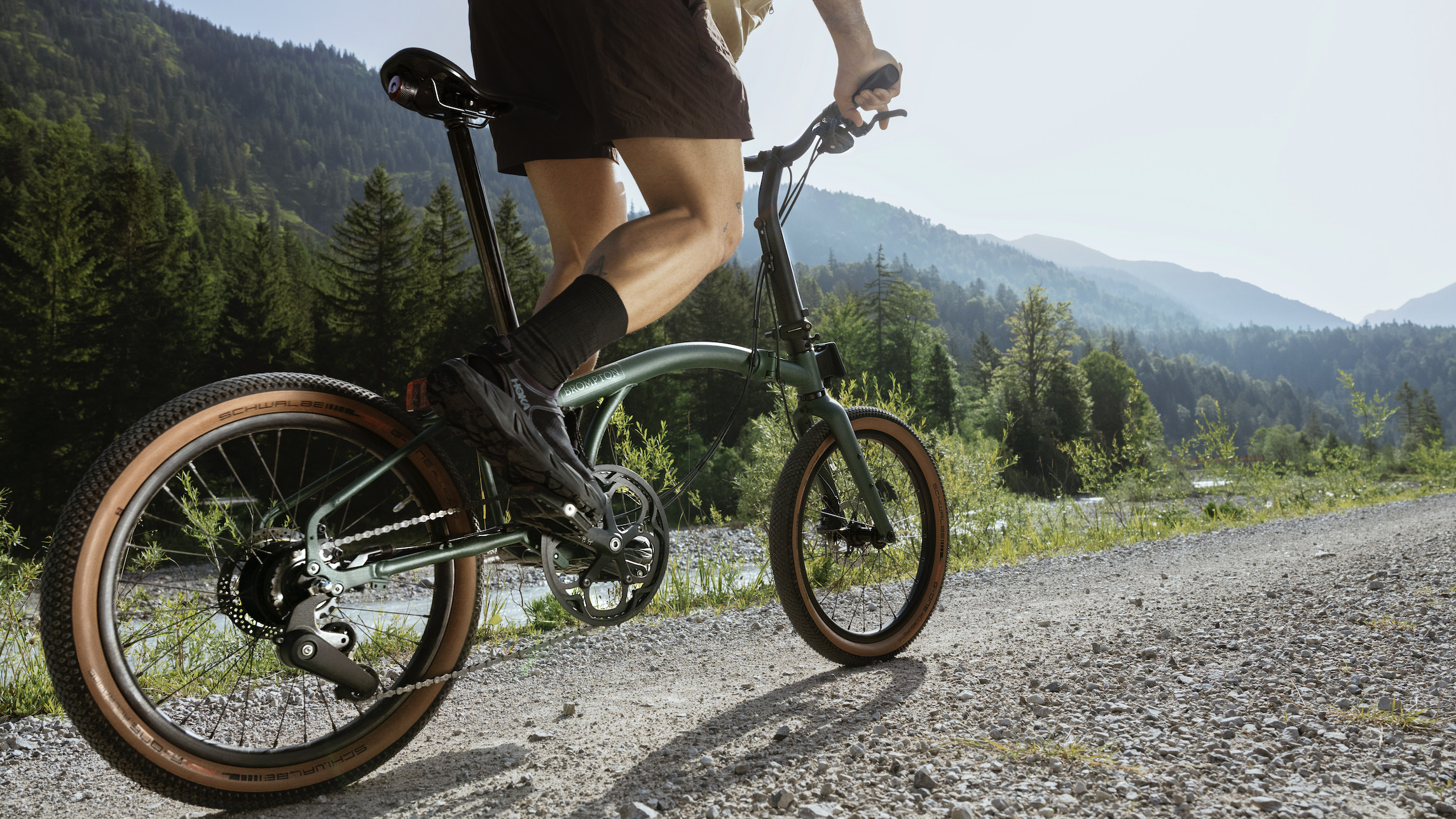
The model I was using was the manual model but there's an electric version too. And if you're shopping for an e-bike then check out the best electric bikes here, as well as the best budget electric bikes and the best bike helmets.
Turns out my first experience with a Brompton felt ideally suited to the way cycling fits into my life. But at the same time, I'll acknowledge up front it's a divisive bike that won't be the best option for everyone.
Get instant access to breaking news, the hottest reviews, great deals and helpful tips.
And, because it's a Brompton, it's expensive. You're looking at $3,300 from Brompton USA and £2,399 here in Jolly Old England. So with that caveat stated up front, let's get on with what I liked and what I didn't.
The Brompton G Line is the famed British brand's first folding bike designed for gravel trails as well as city streets. It's got larger 20-inch wheels, a steel frame and the Brompton's first implementation of disc brakes. Weight starts at 32.63 lb and other features include ergonomic grips and an 8-gear system that makes navigating terrain even easier.
The Brompton G Line is the famed British brand's first folding bike designed for gravel trails as well as city streets. It's got larger 20-inch wheels, a steel frame and the Brompton's first implementation of disc brakes. Weight starts at 13.9kg and other features include ergonomic grips and an 8-gear system that makes navigating terrain even easier.
Brompton G Line: what I liked
Resilient and sturdy
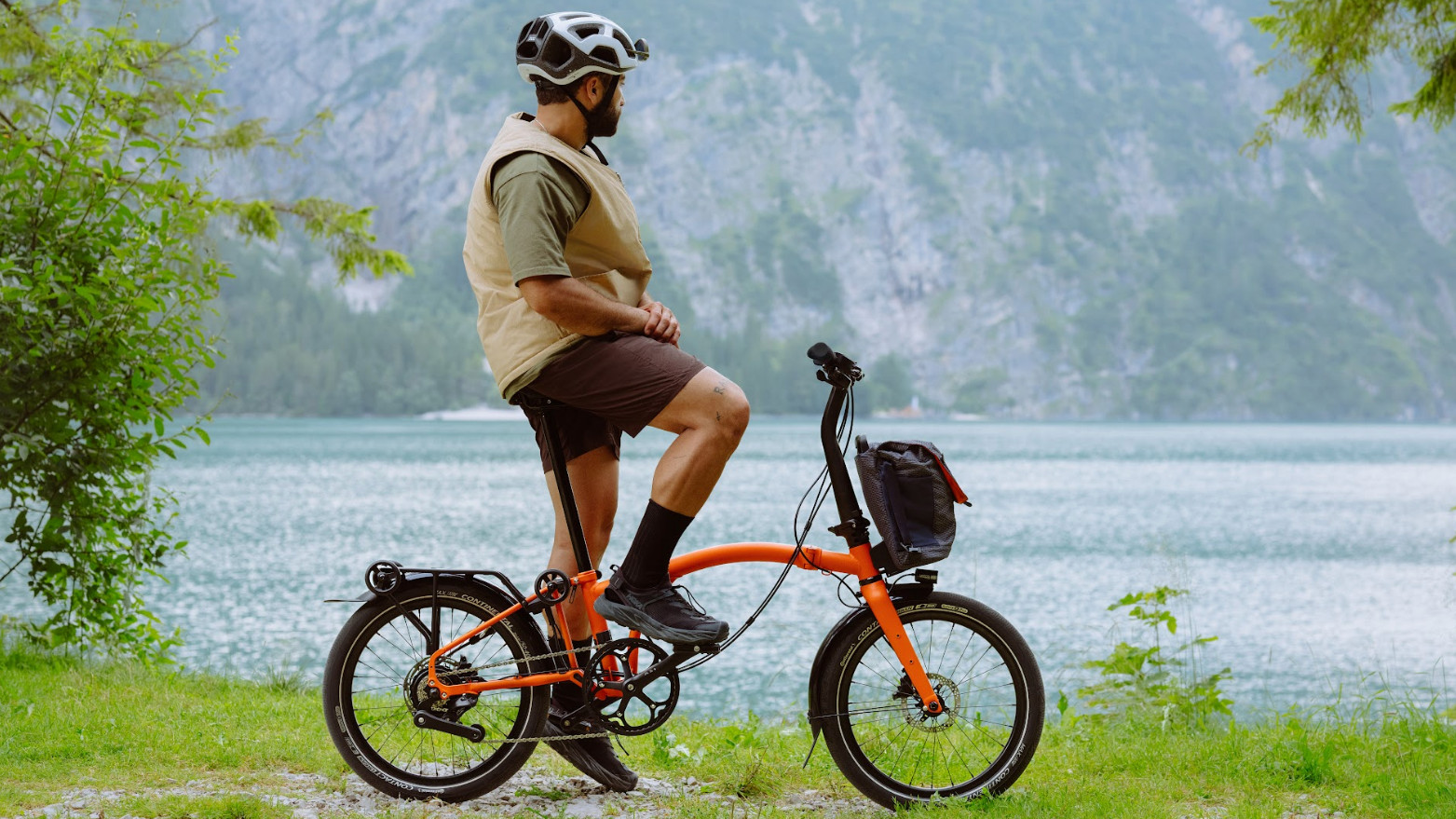
Brompton has put its design on steroids for the G Line to make sure it can handle those gravel tracks that are its raison d'être. As the company's first proper gravel bike, the standard 16-inch wheels have been boosted to 20-inch and equipped with tubeless gravel tires.
As the company's first proper gravel bike, the standard 16-inch wheels have been boosted to 20-inch and equipped with tubeless gravel tires.
The handlebars, pedals and steel frame are all bigger and the result is a ride that's stable and accomplished when you're cruising through the city streets. You don't feel like you're going to topple when you hit potholes or cobbles (yes, a section of my commute has cobbles) and the all-too-common sight of broken glass on the side of the street isn't going to shred your tires.
I always imagined that cycling a Brompton would leave me feeling rather vulnerable — as if a particularly strong gust of wind would have me sprawled in the gutter. It's not the case with the G Line at all. I'm also not generally a fan of an upright riding position but I do appreciate the ergonomic grips on the ends of the handlebars.
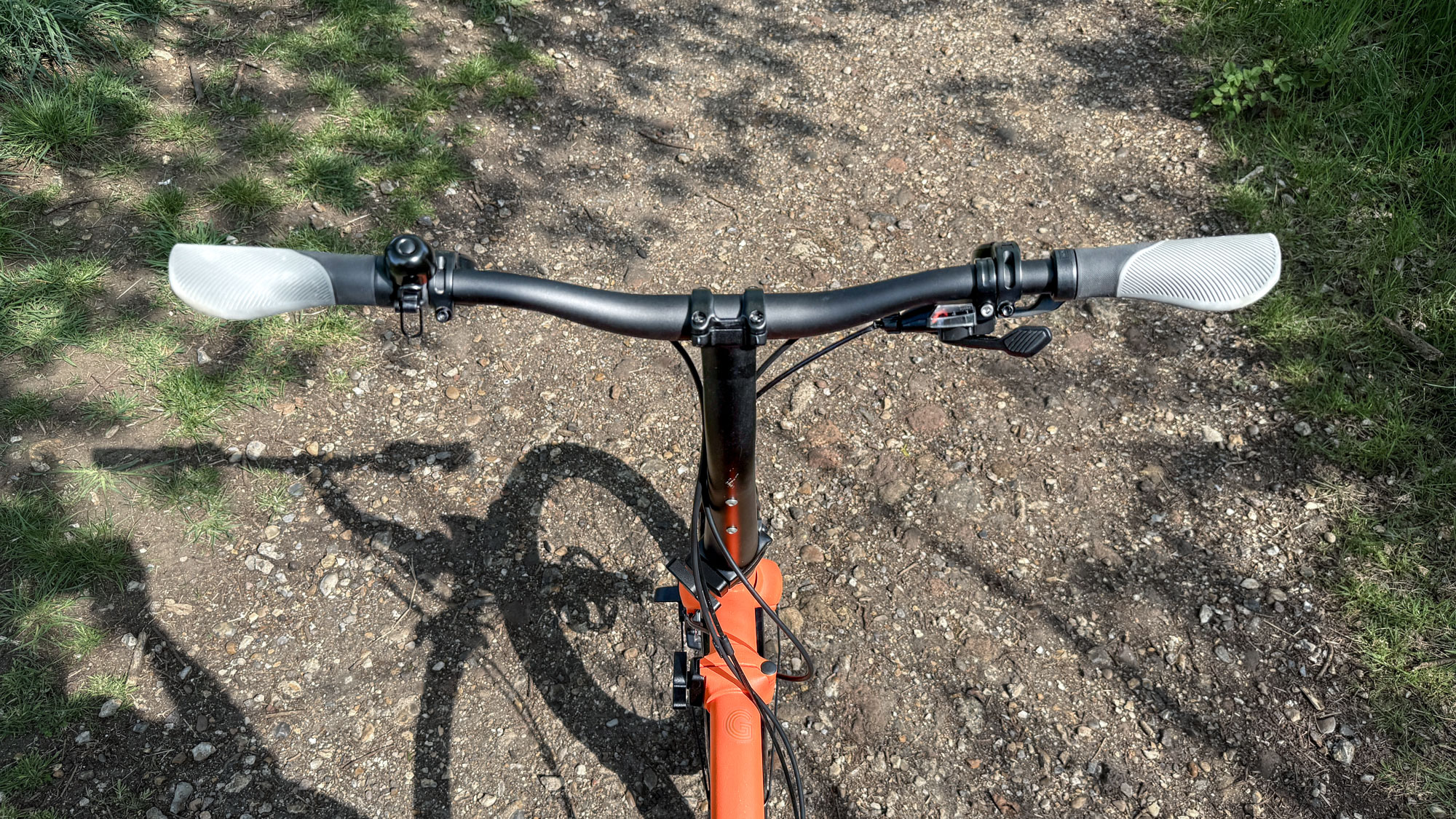
The bike is agile while staying firm underneath you. You can accelerate away from the lights and navigate through traffic with a certain degree of confidence. Gear transmission is smooth and seamless and, in my case, I rarely needed all eight as I only have one particularly nasty hill to deal with.
Space-saving practicality
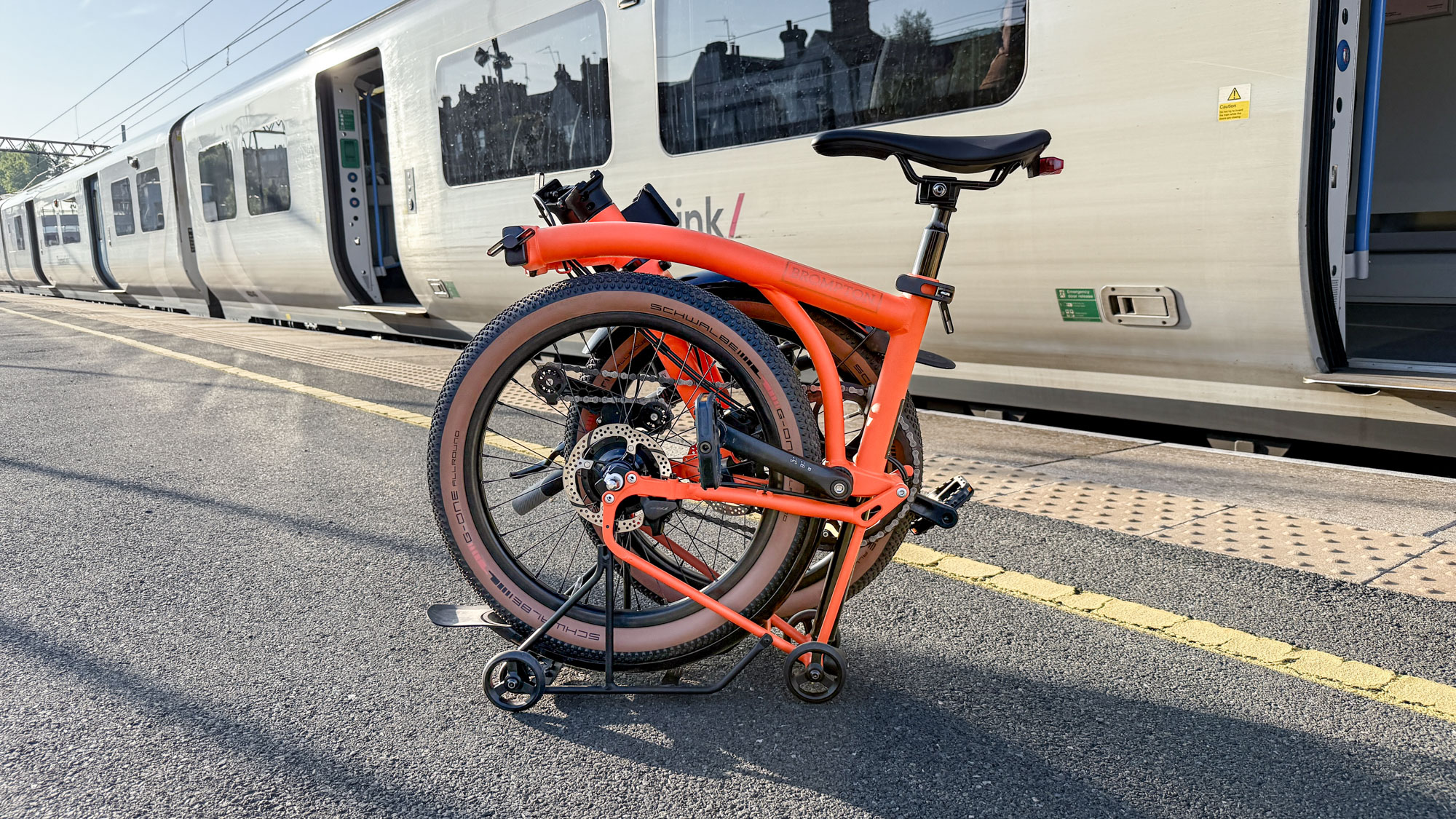
Look, I know the whole thing about Bromptons is that they're folding bikes and therefore very practical when it comes to storage. But I've had other folding bikes in my time and none have been able to shrink down as compact as this one.
The classic example is the train carriage, but I was able to stick this bike under my desk at the office and in a corner of my overstuffed garage and not worry about it taking up yet more space.
When folded, the dimension are just 28.3" / 72cm in depth, 26.2" / 67cm in height and 16" / 41cm in width. Anyone living in smaller accommodation — like a one bedroom city apartment — will undoubtedly appreciate it.
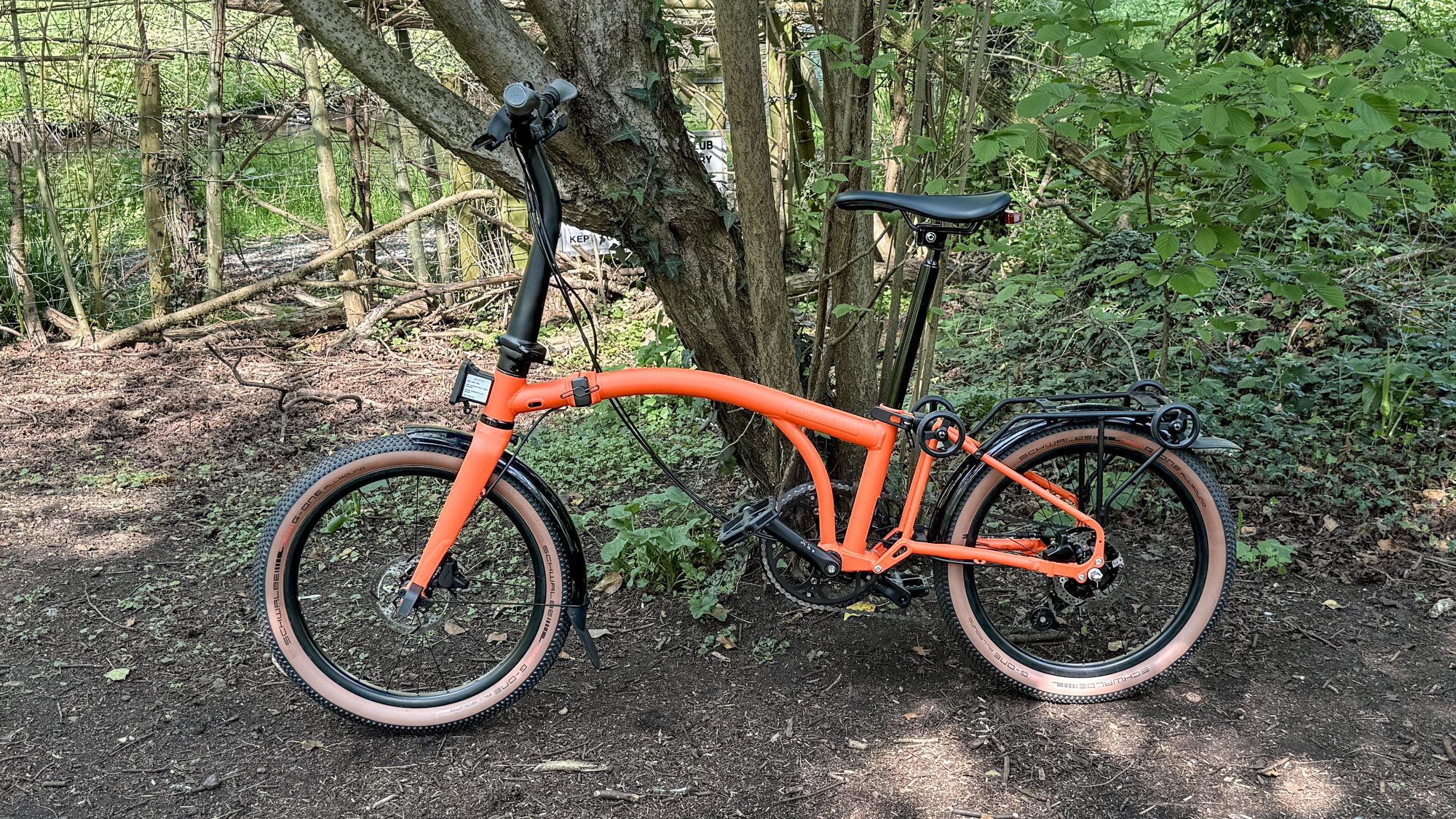
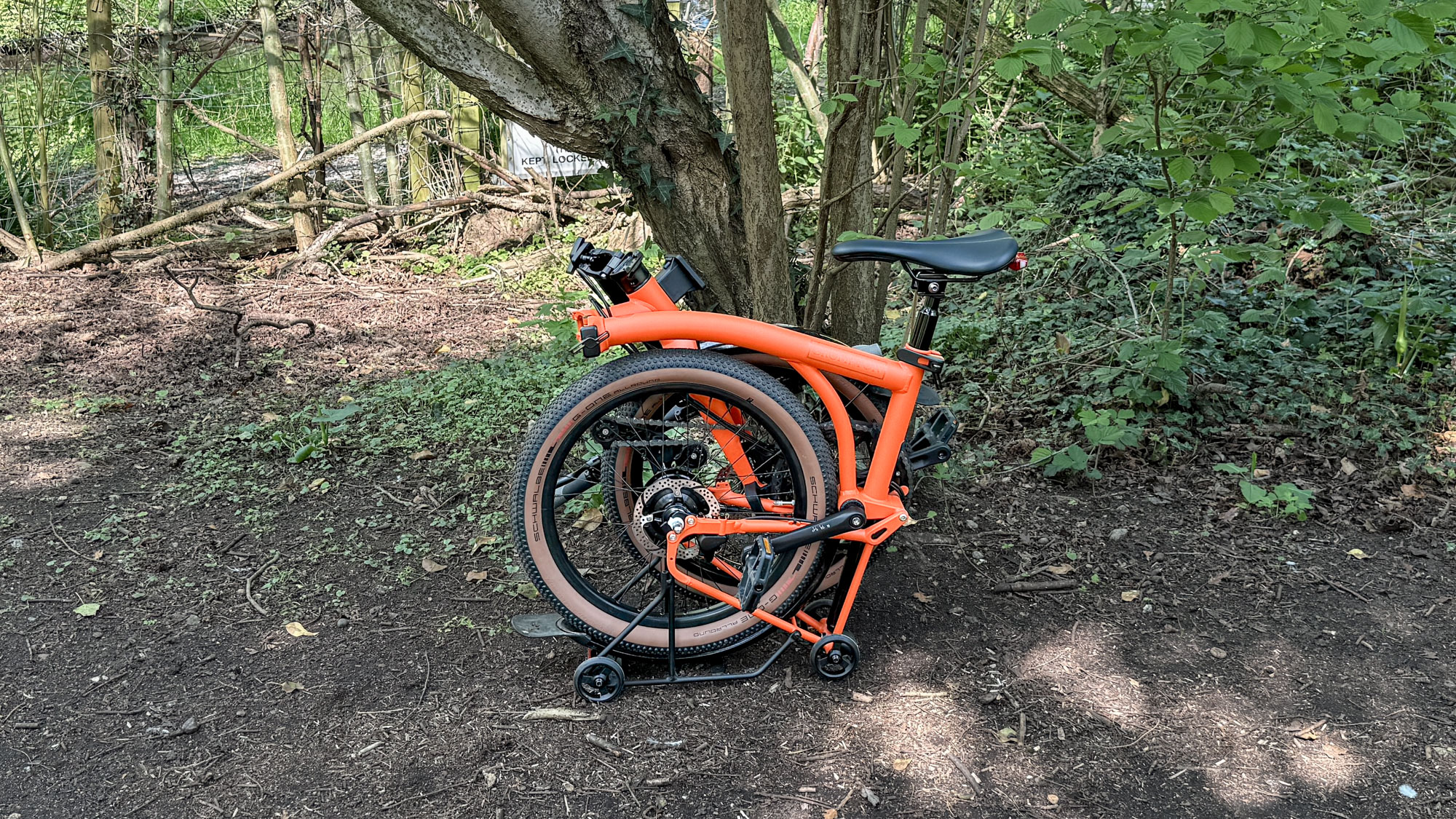
But here's the rub — and I'll expand on this at the close of this article — by bulking the G Line up for rugged rural adventures, Brompton has made it less of a commuter staple because it's larger and heavier than the company's other models.
In my particular case, it works okay because I'm only using it to commute a few times a week for city cycling. I also have more storage space than a one bedroom apartment.
So the shortcomings here don't affect me as greatly and I can just marvel at how much more portable it is than my regular bike.
The brakes are on point
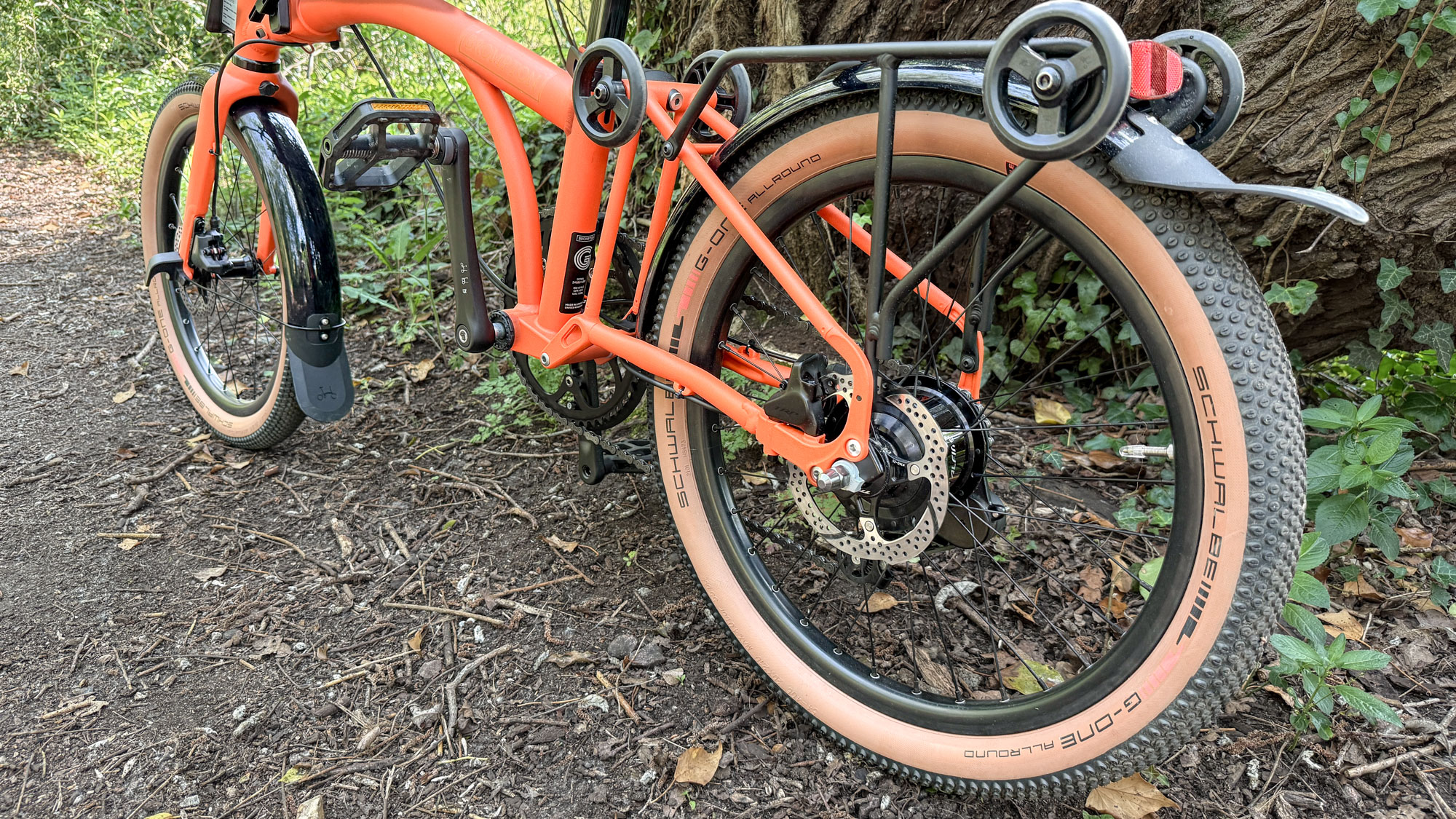
I got my first bike with disc brakes over a decade ago and, after years of cycling with V-brakes, it was a total game-changer. So much so that any bike I consider buying these days had better be using disc brakes or have a damn good reason why not. Not only are they easier to maintain with better durability, but the stopping power is unquestionably better.
The G Line is Brompton's first bicycle to arrive with a disc brake system that's present on both the manual and the electric version. It means you can stop on a dime with this bike and that's something that comes in super handy whether you have to deal with a stray pedestrian stepping out in front of you, a car braking hard or a rough patch of ground on an off-road trial.
It's understandable why Brompton hasn't used disc brakes up to this point — they do make the bike heavier and wider and create a trade-off with the practicality of a fold-up bike. Perhaps because I'm not a seasoned Brompton cyclist I'm willing to make this trade though as the precision you get from a good disc brake system is a big plus in my book.
Brompton G Line: what I didn't like
Large and heavy for a commuter bike
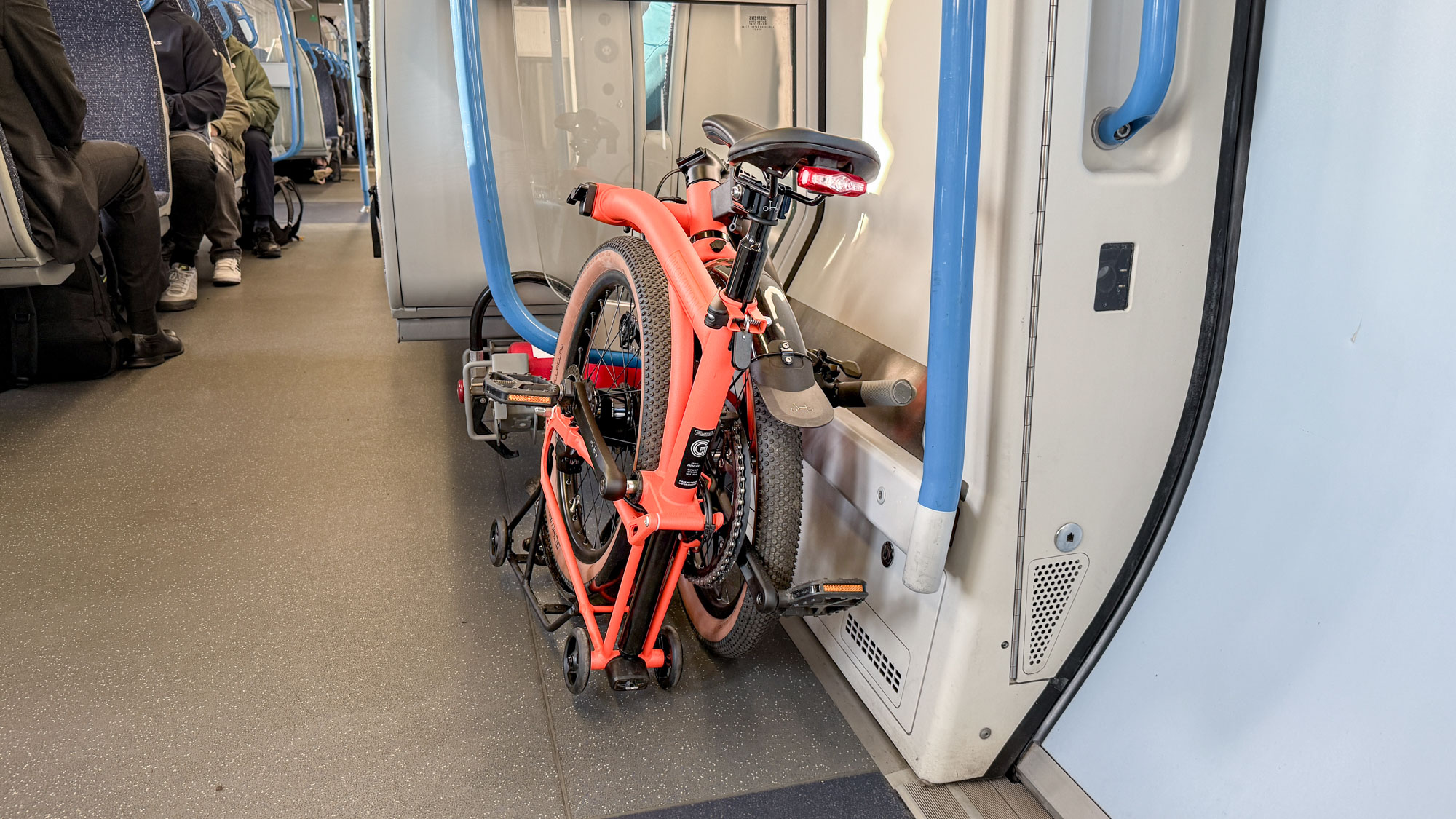
With the caveats I expressed in the last couple of points, this probably won't come as a surprise to you. I think the changes Brompton has implemented to make the G Line a more capable off-road bike than any of its other models have made it by necessity a less capable commuter vehicle. The model I tested weighs in at 14.8kg (32.6lbs) with the roller rack and mudguards fitted and that's still pretty heavy. If you opt for the vanilla G Line, it's a slightly less 13.9kg (30.6lbs).
Anyone familiar with Brompton bikes will know the regular C Line (also with a steel body) tips the scales at 12kg (26.4lbs) and is a smaller overall package when folded. At £1,599 in the U.K. and $2,000 in the U.S., it's a darn sight cheaper, too.
That weight may not seem like much, but if you're routinely carrying your bike up and down stairs (to swap train platforms or get up to your office floor) you'll definitely be aware of each extra kilogram. Likewise, even when folded it's still a large item to try and squeeze into an elevator cab or under a desk. I know, I tried.
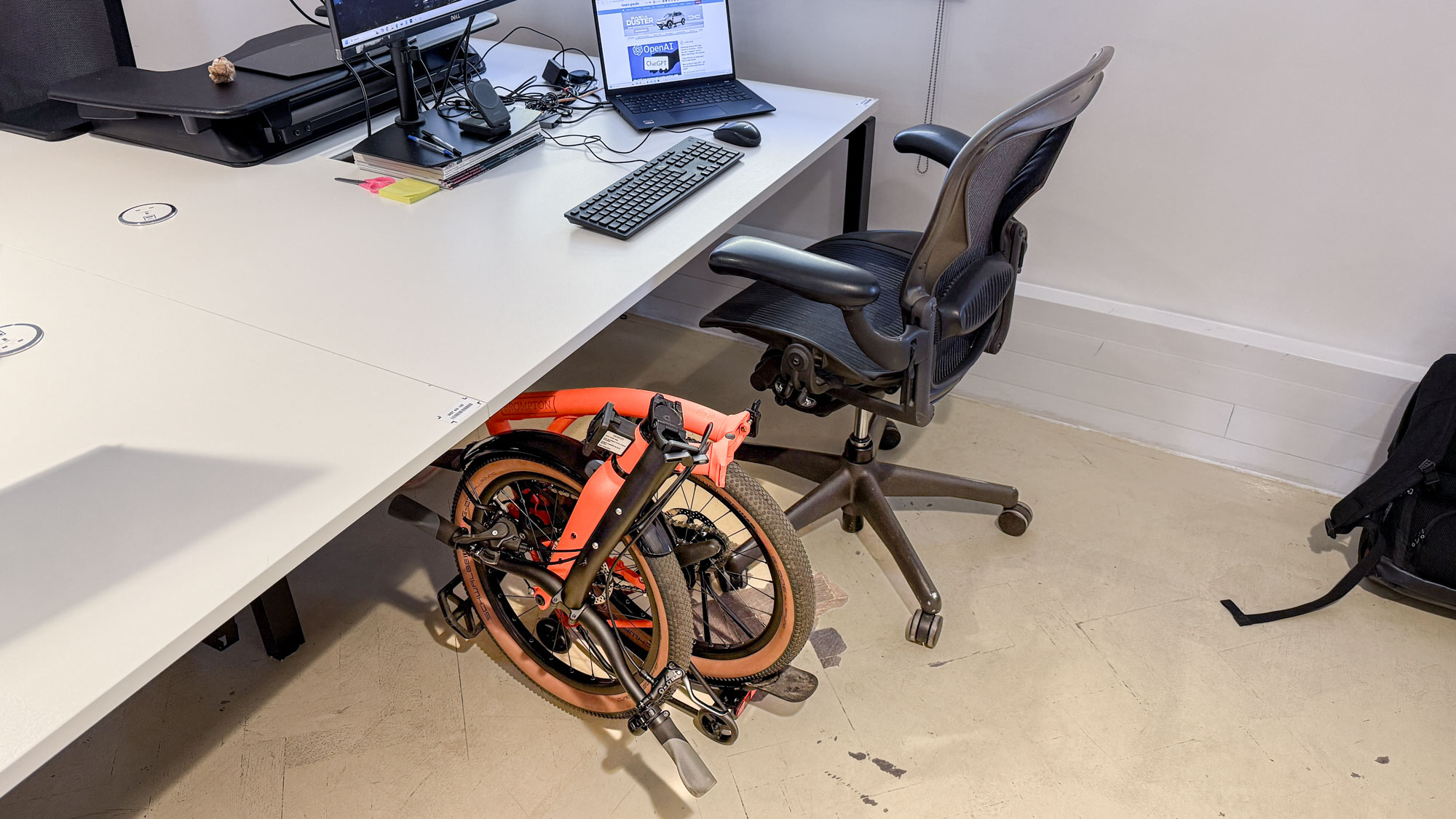
And just as there are better commuter bikes made by Brompton, there are better dedicated gravel bikes made by other companies that, for seasoned cyclists, will offer a far better performance.
So the Brompton G Line's biggest strength is also its biggest weakness. By trying to be both a commuter vehicle and a gravel bike, you have to overlook the fact it's not be the very best choice in either category. To bring it back to what I mentioned at the beginning of this article; that works for me but it might not work for everyone.
Bottom line
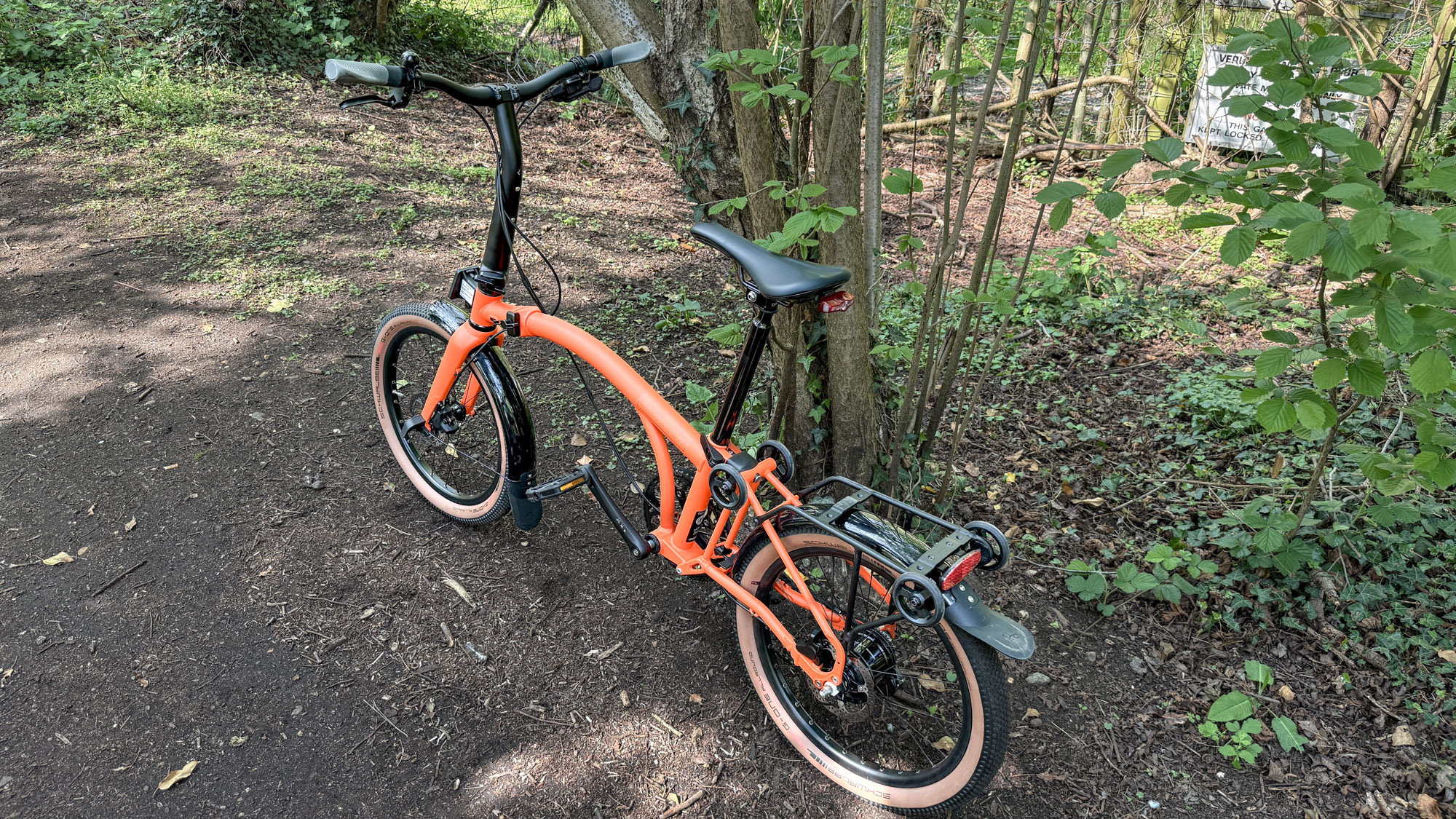
I am not a died-in-the-wool cyclist in the sense I enter competitions and hang out on cycling subreddits in my spare time. But I am someone that uses a bike for commuting a couple times a week and loves heading out for a weekend ride in the tracks surrounding my town every once in a while.
Seasoned cyclists will probably have a dedicated bike for commuting, a dedicated bike for off-roading and maybe a dedicated bike for road cycling. I just want one bike that does a little bit of everything. That, for me, is the Brompton G Line.
If I was forcing my way through a train-based commute five days a week, I wouldn't buy this bike. If I was heading out every weekend in all kinds of weather to rip up the country trails, I wouldn't buy this bike. But since my cycling needs are a hybrid of the two, I find the Brompton G Line fits the niche almost perfectly. And it helps the "Adventure Orange" finish just looks incredible, too.
More from Tom's Guide
- I commuted with this folding e-bike for a month — here’s the pros and cons
- Best budget electric bikes in 2025
- I spent a month cycling with the Canyon Grand Canyon ON: 9 e-bike — here’s my verdict

Jeff is UK Editor-in-Chief for Tom’s Guide looking after the day-to-day output of the site’s British contingent.
A tech journalist for over a decade, he’s travelled the world testing any gadget he can get his hands on. Jeff has a keen interest in fitness and wearables as well as the latest tablets and laptops.
A lapsed gamer, he fondly remembers the days when technical problems were solved by taking out the cartridge and blowing out the dust.
You must confirm your public display name before commenting
Please logout and then login again, you will then be prompted to enter your display name.
